

One of the advantages to our Round the World plane tickets was that we could include Easter Island as a stopover within South America just like it was any other city, avoiding the steep prices that are difficult to avoid for the lone flight a day available for booking.
Even though Easter Island has been part of our draft plan for this trip for years, we didn’t actually do much research ahead of time about what to do once we arrived, and how to actually accomplish it. This turned out not to be a problem at all, and the six days we gave ourselves was more than enough to see all we wanted to see and have some time to relax and soak in the island vibe.
Similar to Ilha Grande, arriving to Easter Island makes it clear right away that you’re somewhere pretty different. Our plane curved around most of the island before coming in to land on the runway that stretches nearly all the way across the rare bit of flat land between two volcanoes at the southern end of the island. We deplaned on simple stairs… onto the tarmac itself, where everyone was pausing to take photos and take their first breaths of island air. Since there is only one flight a day, there aren’t any “gates” just the small airport terminal that is mostly open-air.
Easter Island is also very small - it takes about 25 minutes to drive the entire length of it - and still quite undeveloped. There are a few two-story cabins in parts, but no chain hotels or high-rises of any kind. This means that many of Ahu Moai are taller than any of the buildings on the island, really hammering home how crazy it is how many unanswered questions there still are about how they were produced, moved, and erected.
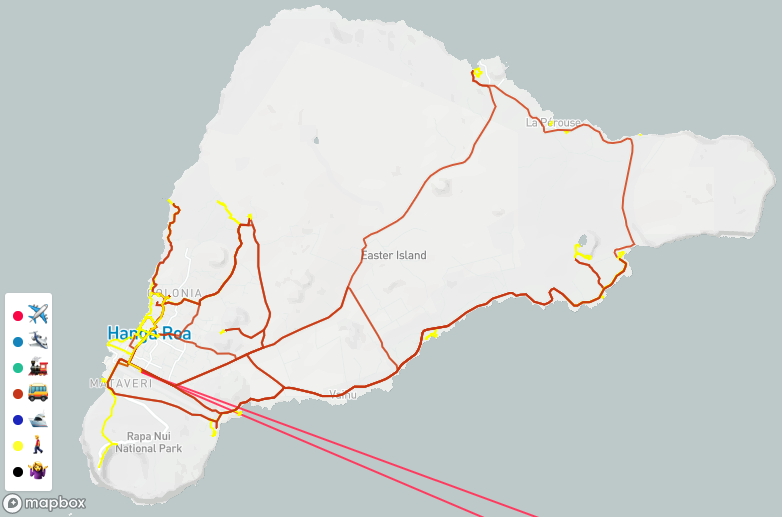
We got around. Yellow is walking; brown is driving. Explore in more detail on the homepage map.
Around Town: The only real town on Easter Island is Hanga Roa, though we stayed in an Airbnb in the Tahai neighborhood a short walk east of the main strip of restaurants and shops. Like most Cabañas, they arranged a free airport pick-up for us so we wouldn’t have to try to find the place on our own - there aren’t any addresses on Easter Island and all directions are given through old-fashioned landmark-based wayfinding.

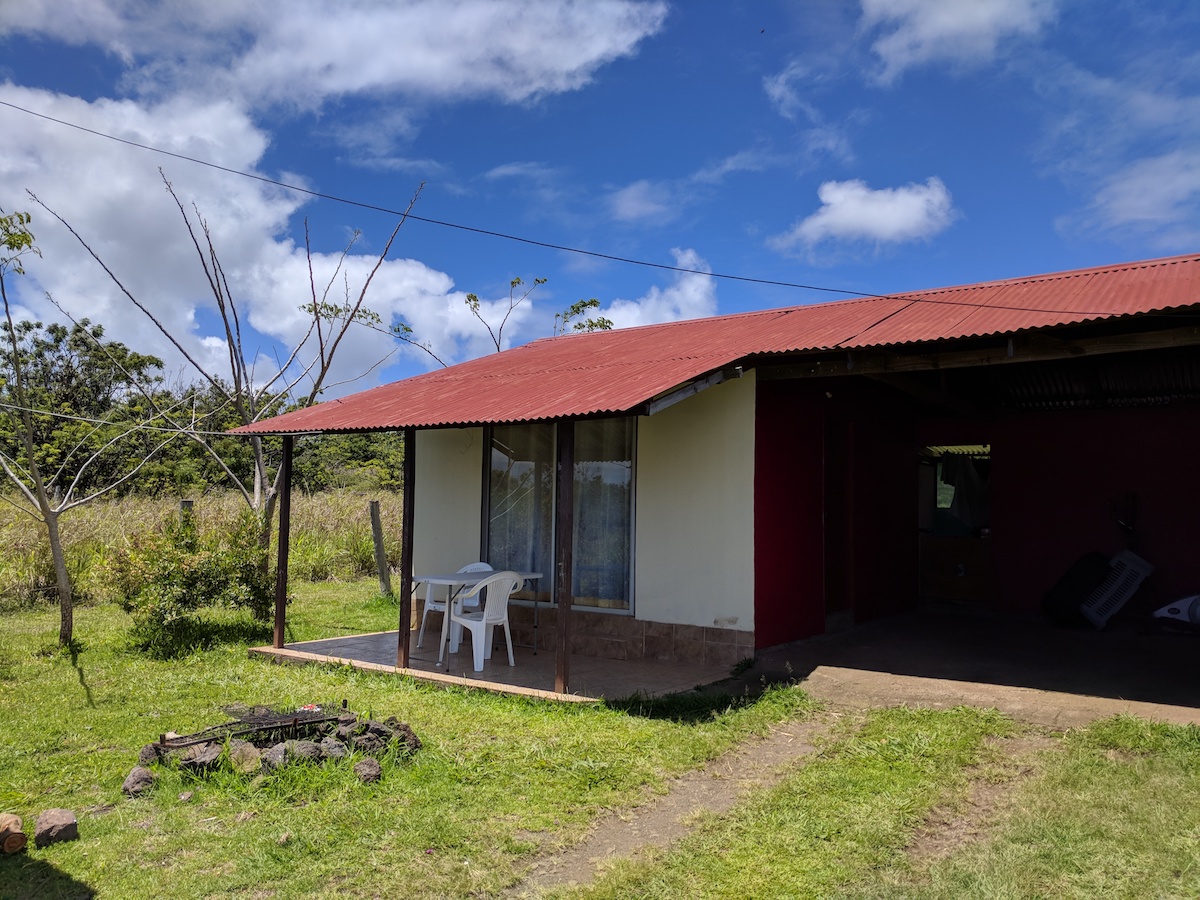
Left: Tía Berta, our favorite restaurant on the island. Right: Our Airbnb in the Tahai neighborhood of Rapa Nui.
We tried a number of restaurants in Hanga Roa, but our clear favorite (and locals’ too by the looks of it) was Tía Berta, also labeled as Restaurant Ariki o te Paná on one sign (and located at -27.151985, -109.431178). While everything on the island is very expensive by Chilean standards, they had really good huge empanadas and great ceviche for less than most other restaurants on the island. During six days we ended up eating there four times!
Our Airbnb’s location was great each evening, as it was just a short stroll down to Ahu Tahai - the best place on the island to take in sunset behind the majestic Ahu Moai. We ended up at Ahu Tahai almost every night, and the vibe varied quite a bit depending on how nice everyone thought the sunset would be and whether any large tour groups made it a scheduled stop. If you’re not stressing over snapping the perfect photo you can’t help but relax while watching the wild island dogs play with each other, or even try to chase some wild horses away.
One more note on sunset: While some blogs we read recommended making the trip up to Ahu Akivi for sunset, it is now closed each day in the early evening. After visiting Puna Pau late in our stay we kicked ourselves for not enjoying a sunset there when we had a vehicle to drive back with, so would recommend trying that if you’re looking for a quieter sunset spot.
On Foot: In addition to trekking back and forth through town regularly, our main walking adventure was the hike to Orongo. The trail picks up behind the airport and heads up moderately steep hills until it reaches the rim of the crater at Rano Kau. There is a bit of a trail along the rim to the east, and a well-trod trail heading west around the ridge toward Orongo. In total the hike took about four hours from when we left our Airbnb until we got back down the trail, with time spent exploring Orongo and snapping photos of the beautiful marshland within the crater.
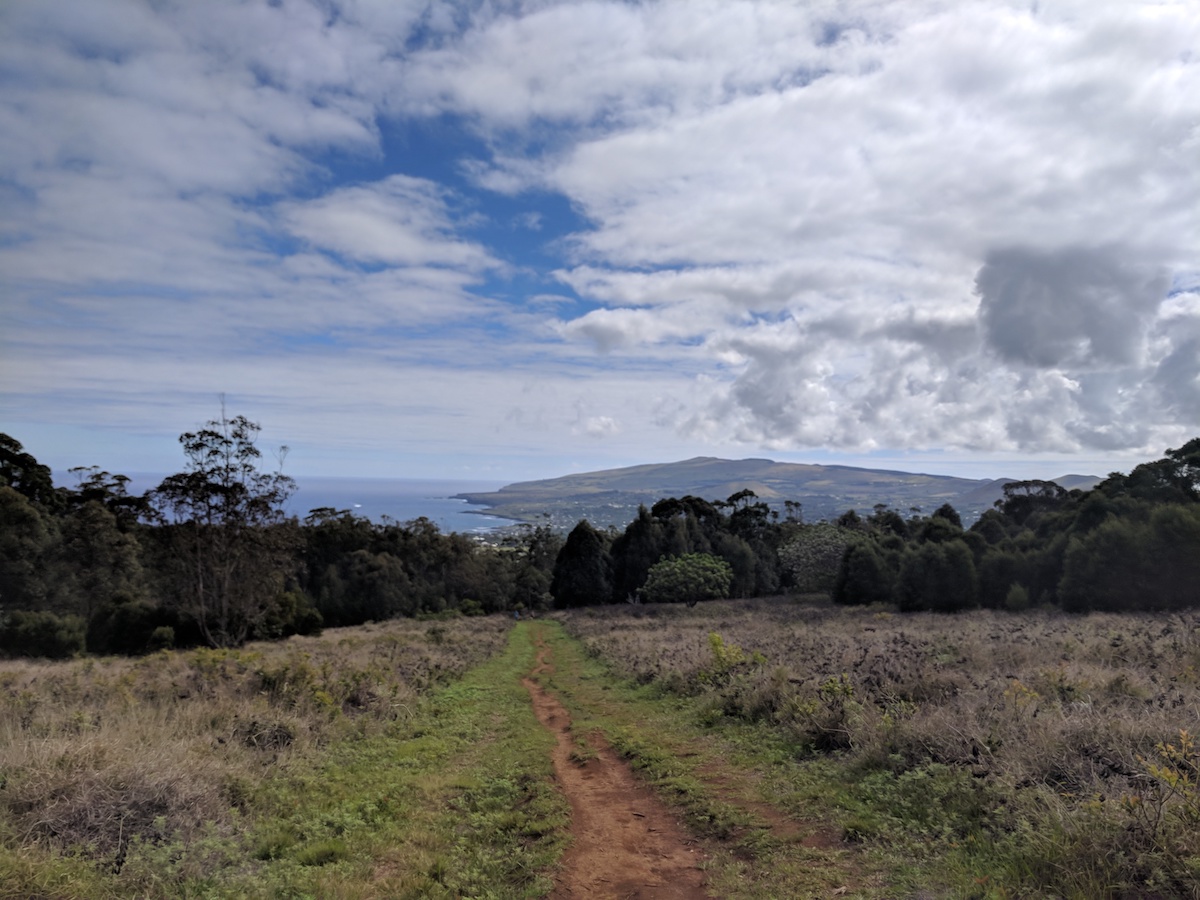
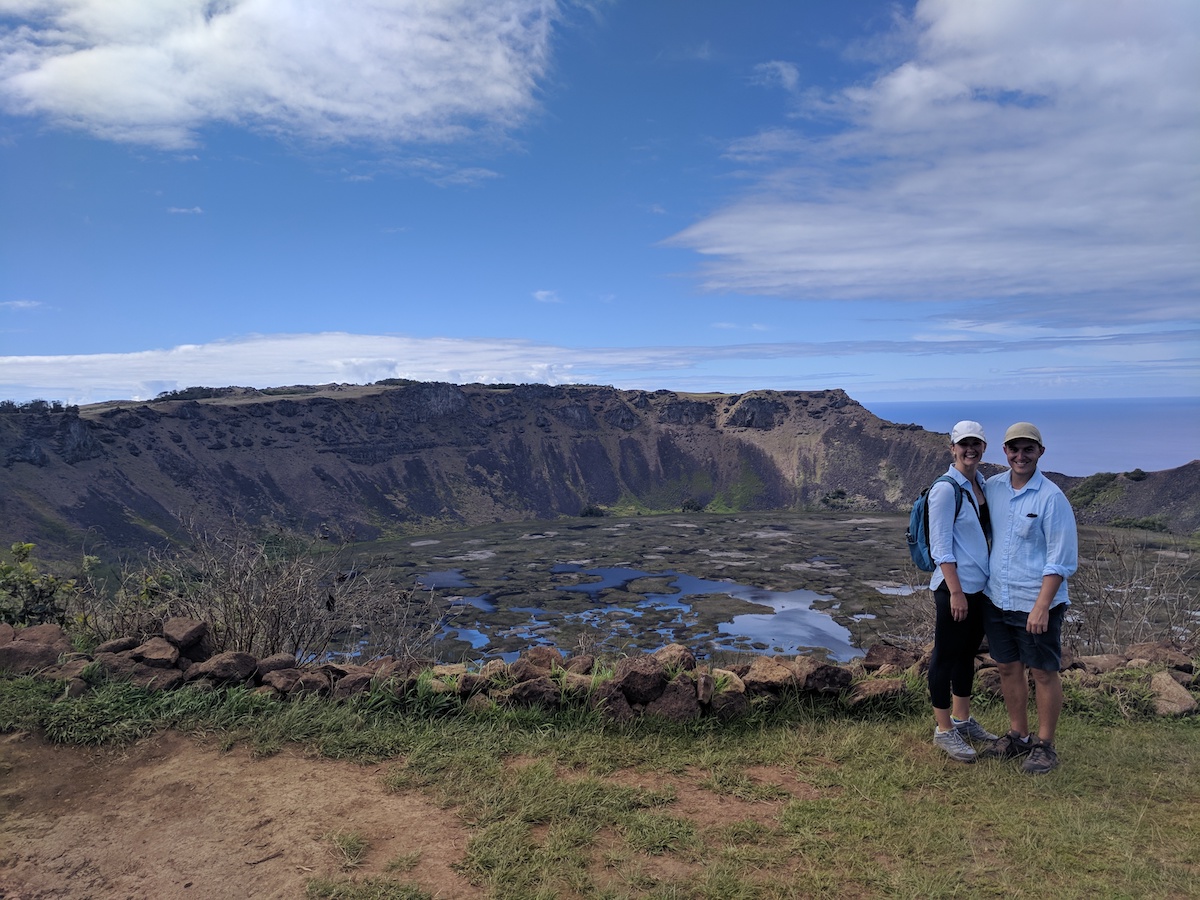

Left: Partway up, looking back down the trail toward Rapa Nui. Middle: The crater at Rano Kau. Right: A portion of Orongo, a restored ceremonial village.
By Car: Like most things on Easter Island, car rentals are expensive. There aren’t any international rental companies, just a few dedicated local storefronts with their own small fleets and a number of shopkeepers with a single vehicle they’re willing to rent out. We knew we wanted to be able to get out of Hanga Roa for at least two days, so after working our way down the row of agencies on the main street in town we settled on a deal with Oceanic rental to get a discount on both days by taking a car the first day and an ATV the second day. This ended up costing ~$160 USD, which is less than the $175 it would have cost to rent two bikes for three days.

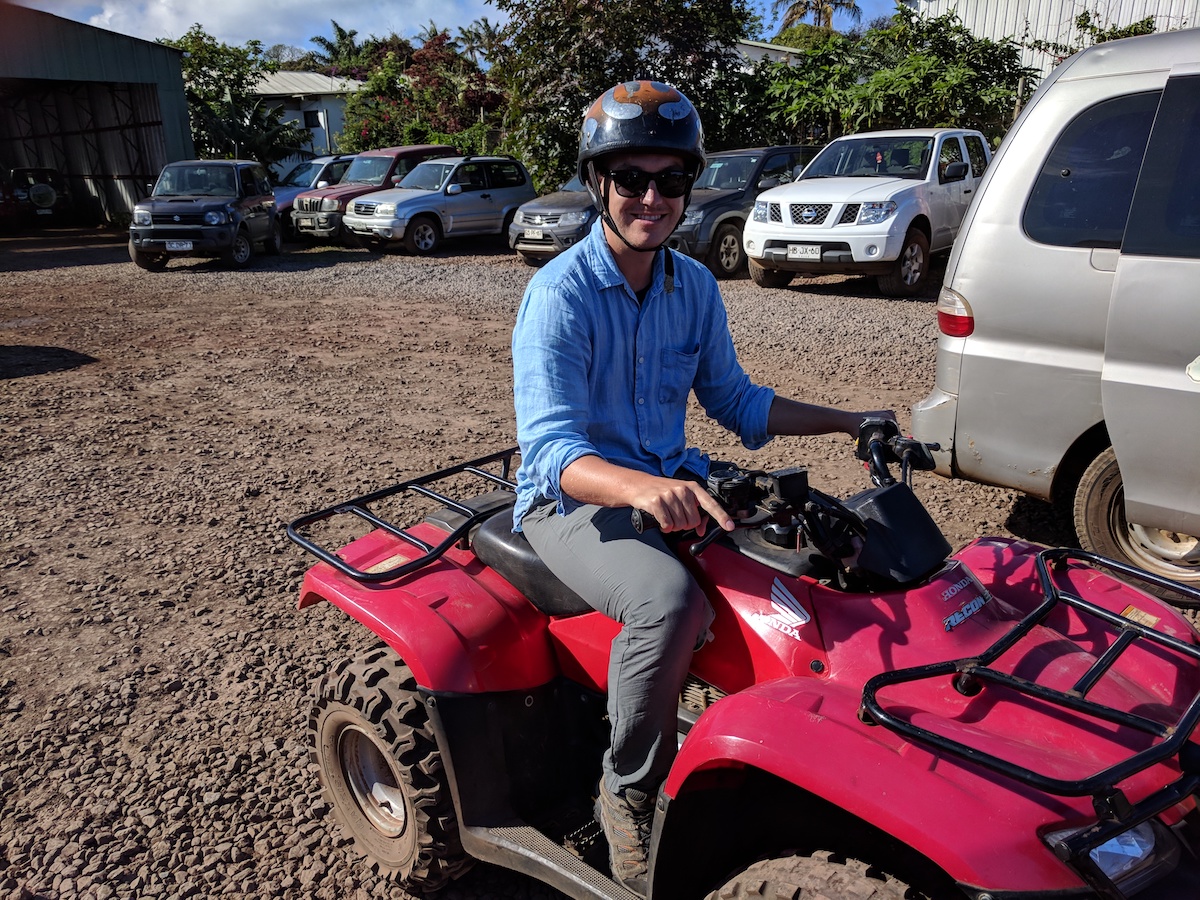
Left: At One Makihi, looking back toward Rano Raraku past our rental car. Right: Me on our rental ATV, ready to head off the agency parking lot.
For the 24 hours we had the car, our goals were to: (1) get all the way around the island, since we likely wouldn’t want to drive the ATV as far; and (2) to enjoy a sunrise at Ahu Tongariki. We picked up the car at about 10am and set out on a counter-clockwise route, sticking as close to the coast as we could and stopping regularly to check out the Ahu Moai scattered along the route.
Our first longer stop was at Rano Raraku, the quarry area where most of the megaliths were carved and where many remain in various states of completion. Along with Orongo, this is the only site we were told we could only enter once, so we made sure to thoroughly explore the area. In addition to the pathways around the statues and cliffs, there is a trail that heads up into the crater of the volcano itself. After the beauty of Rano Kau this was a bit of a letdown, and the former trail around the rim has been closed to the public. We stayed just long enough to get caught in a bit of rain before grabbing an empanada from the café and waiting out the rest of the passing storm.
Our second major stop was at Anakena, the only true beach on Easter Island. We ended up there on a public holiday so it was pretty packed with locals and tourists alike. We enjoyed (an even more overpriced than usual) lunch beside the beach and explored the nearby Ahu Nau Nau platform before heading back toward Rapa Nui on the inland highway.
We didn’t have to return the car until around 10am the following day, so we set a pre-dawn alarm and made the drive to Ahu Tongariki for sunrise, getting there about 20 minutes before the official sunrise time. They open early to let folks experience the sunrise there, and it was already fairly crowded by the time we went in. Luckily it’s a pretty big space so we found a spot to relax on the grass and get some good photos of the sun rising behind the megaliths.
Sunrise at Ahu Tongariki.
On Quad/ATV: While we had seen a number of other pairs zooming around the island on ATVs (Quads to the rental agencies) I was a bit nervous about losing the familiarity of a car. After a quick demonstration of the controls–some of it even in English–and securing some pretty stylish helmets we motored out of the parking lot and back toward our Airbnb, with me trying to figure out the shifting controls on the way.
After a bit of time playing with the controls in the empty lot beside our Airbnb I felt much more confident and we had a really great time on it–riding all around the south half of the island on it ended up being one of my favorite days of the trip so far.
First, we headed up the dirt road just north of Ahu Tahai, stopping at occasional lookout points and un-restored Ahu. Our plan had been to visit the stops along this road and end up at Ahu Akivi, but all the maps we saw are apparently out of date because the road dead-ended into a National Park parking lot that turned out to be the entrance to a newly-pedestrian-only zone encompassing Ana Kakenga (a very cool cave/tunnel that ends at openings in the sea cliff 40 feet above the waves) and Ahu Tepeu (an unrestored Ahu we didn’t make it all the way to). This was probably our hottest day on the island and after the 45 minute roundtrip hike to Ana Kakenga it was quite a treat to get back on the ATV and speed back through the sea breeze.
We then again took a generally counter-clockwise & seaside route, but took full advantage of the all-terrain capabilities, following many of the off-road, un-marked paths out toward the seaside. Some turned out to lead to beautiful hidden viewpoints or impressive cliffs, while others were little more than a path to an unrestored Ahu Moai platform that was overgrown and unremarkable. This day felt quite a bit more like exploring and not just moving between well-established tourist hotspots.
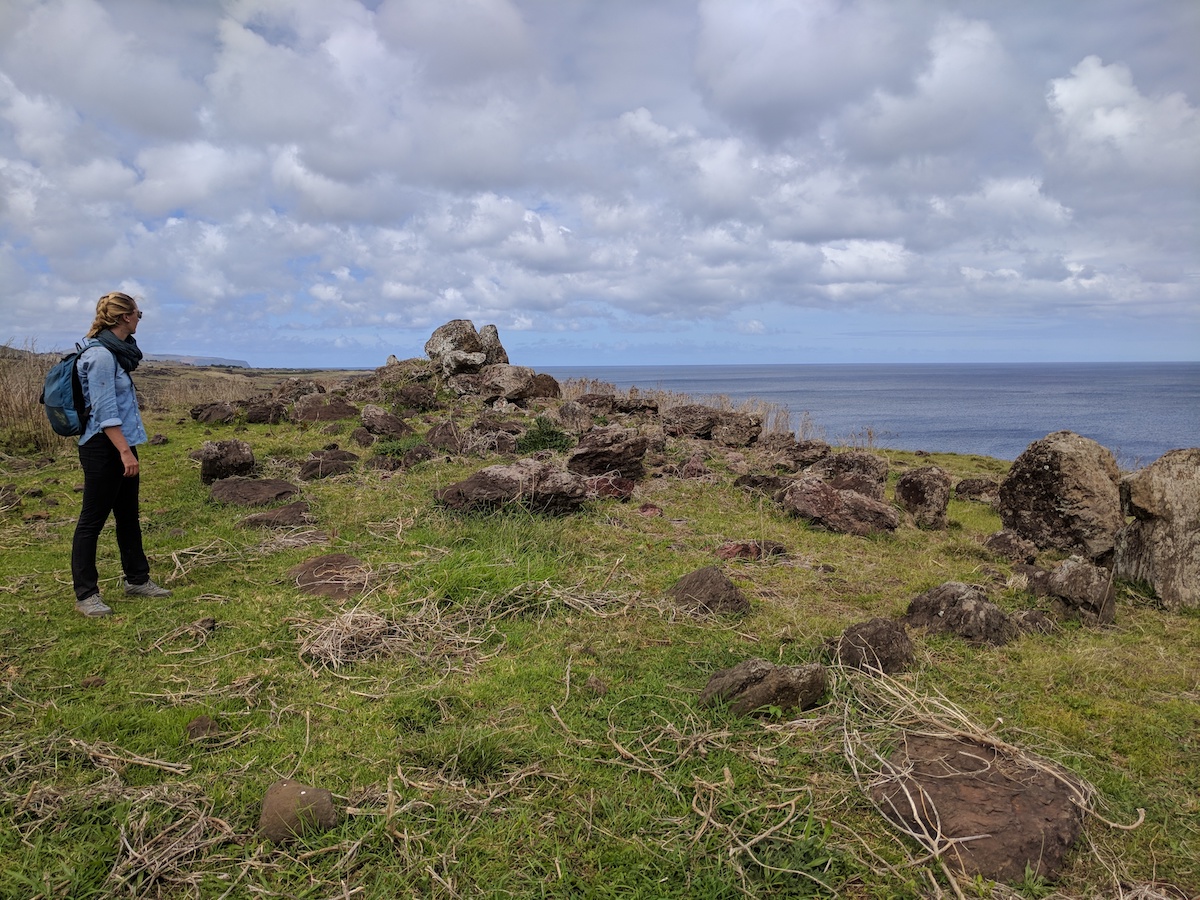
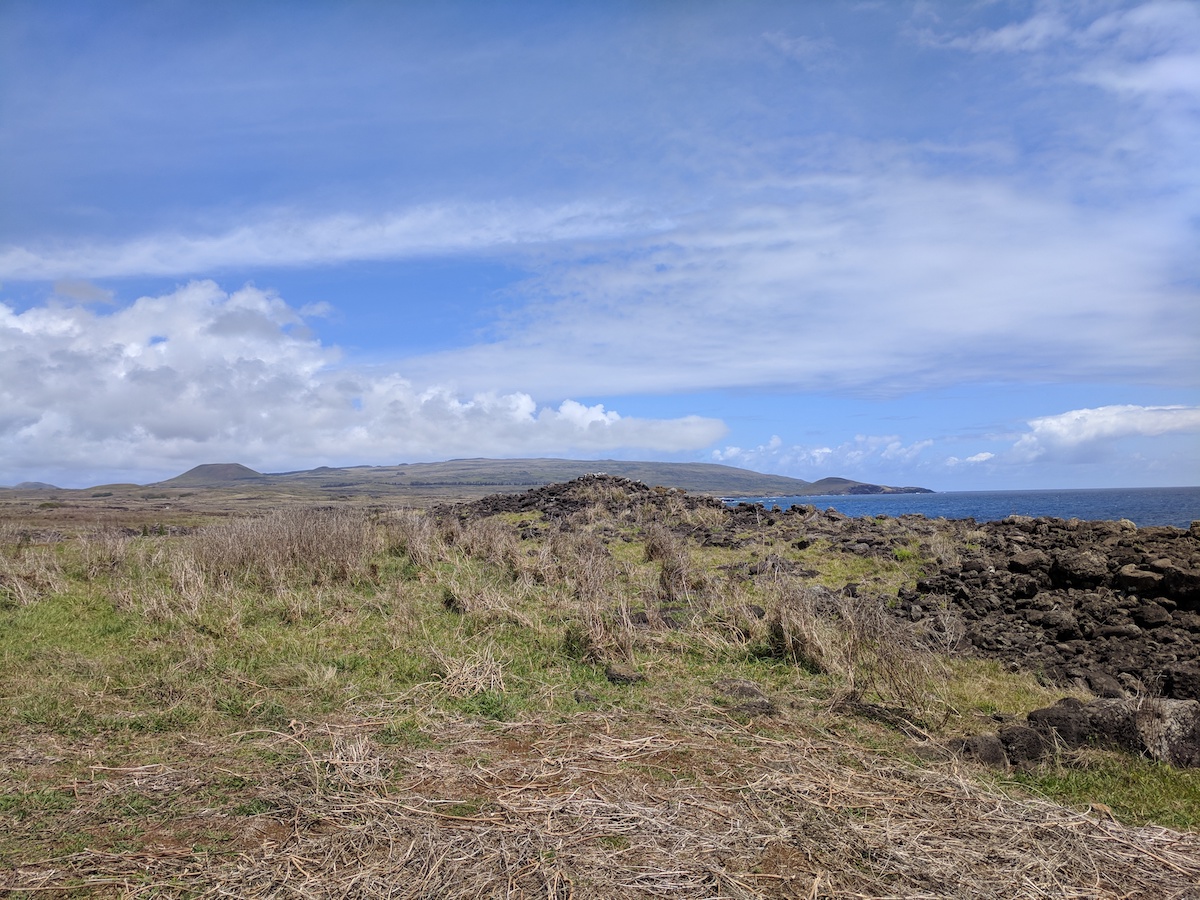
Many of the Ahu Moai scattered around the island's coasts have not been restored and are barely distinguishable from a natural pile of rocks at first glance.
By the end of our first four days on the island we had seen nearly every site marked on the map, but hadn’t made it to Puna Pau yet. While it’s marked on the map, it seems to be left off a lot of tour bus itineraries and not as touted as many of the other sites, but we really enjoyed it. When we visited the next morning, the national park kiosk was unstaffed, meaning we could have come for sunset if we had known the day before, and we didn’t see anyone else during our time there. The site is the quarry for the “red rock” that makes up the “hats” and some of the smaller statues on the island, with many pieces completed but not yet transported, similar to Rano Raraku.
I think the only thing we didn’t love about the ATV is how filthy we were by the end of a long day riding around on it. The island is inevitably dusty and you should just expect to need an immediate shower and a good washing machine at your next stop.
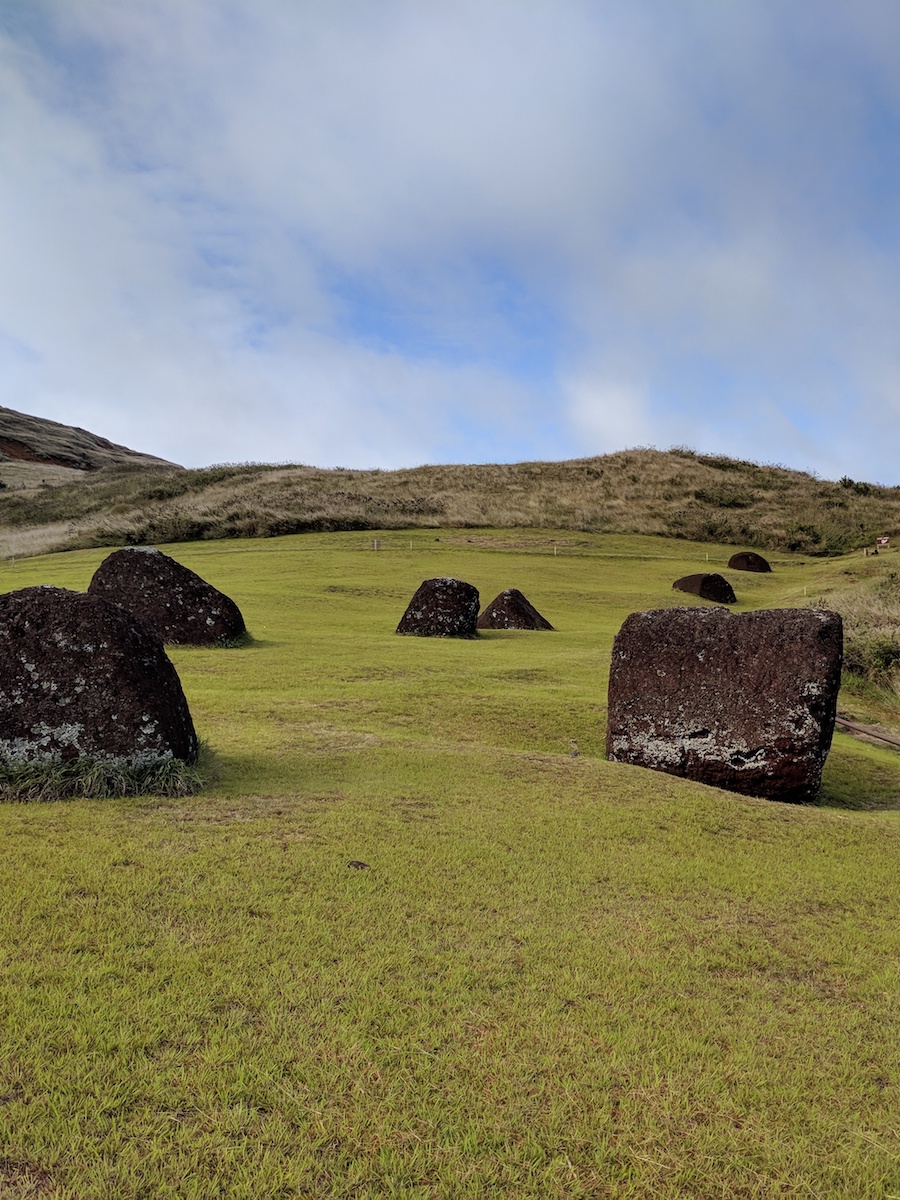
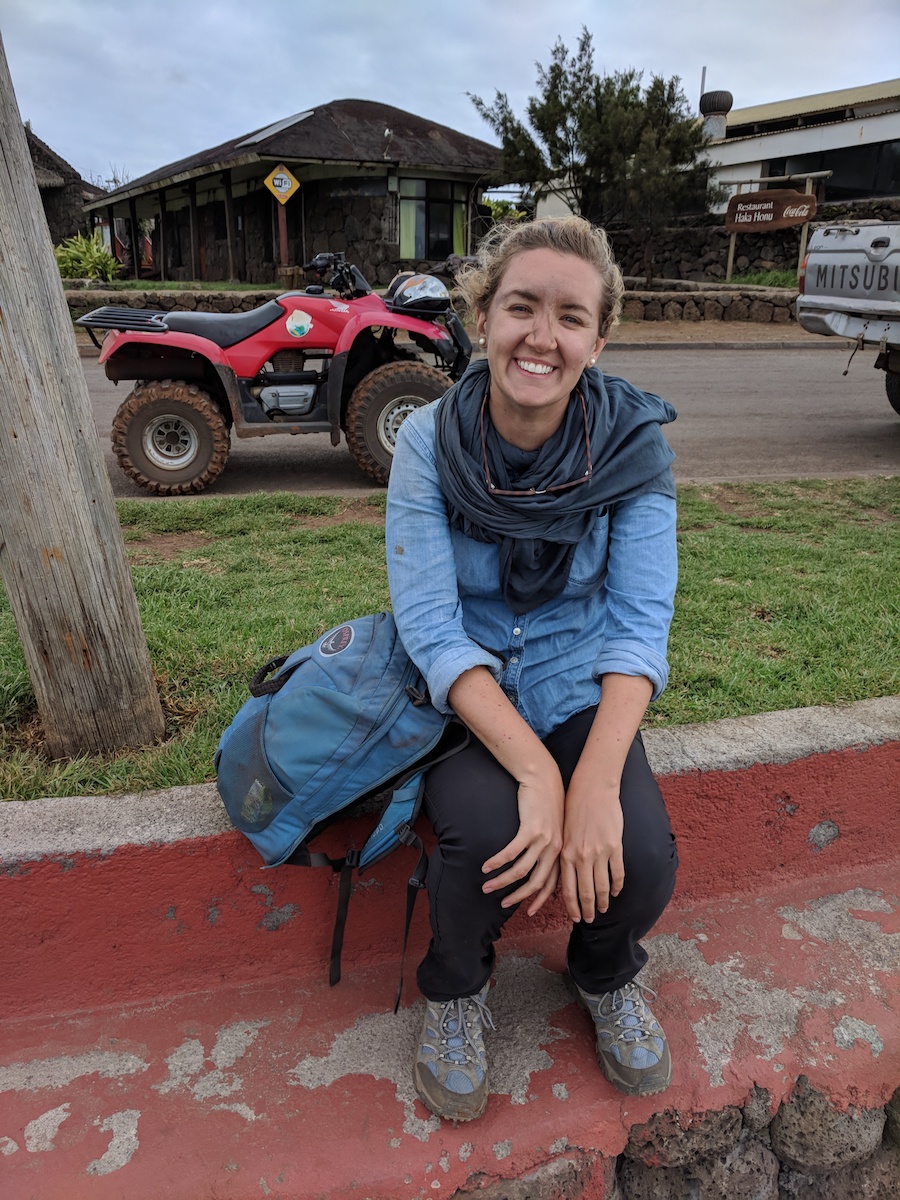
Left: Some of the artifacts at Puna Pau. Right: Amy at the end of our full day of ATV riding, at the island's one working WiFi zone.
We had originally budgeted as much as $90 dollars a night for accommodations, since the island is so expensive, but we were able to find a private Airbnb a bit of a walk out of town, but close to the sunset hotspot of Ahu Tahai with a kitchen for $70 a night.
We had also budgeted $30 (!) dollars per day per person for food and $15 dollars per day per person for entertainment. As usual, we typically self-catered 2 meals a day to save money, though even basic lunches used up a lot of that budget - luckily the surplus from finding a cheap accommodation was able to support my developing ceviche habit. Not counting the $80 USD per person entrance fee (paid at the airport) that we had budgeted for separately, we ended up coming in at an average of $98 a day for the two of us (out of $90 a day that we budgeted). This included a fancier dinner at Te Moana ($75, which was pretty good, but not amazing) and our car/ATV rental ($166 total). For our 6 days on Easter Island we had budgeted a total of $1,200 and spent $1,175 leaving us with $25 leftover… not bad!
Overall, the prices were just as bad as we had been told to expect, and the cheap quality of Tía Berta may have been the only thing that let us stay under budget while still getting to do everything we wanted to do. Well worth it for an experience neither of us expect to have again, though!